Shootout at Reynolds Creek Park (Waco TX)
By Paul Haynie #102 "Frankenduck's Mons" (1ea 3ad 1ar)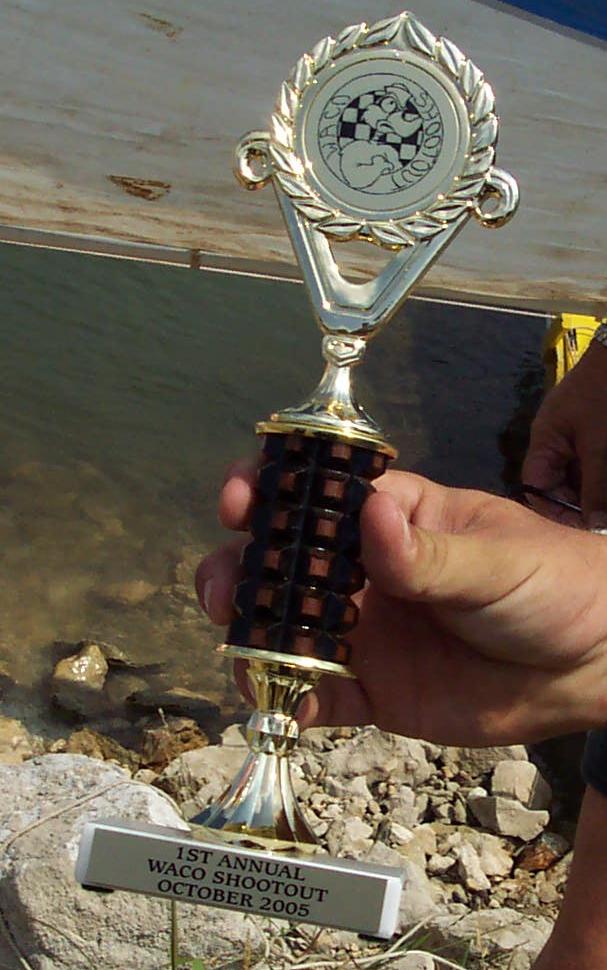
Jason Nabors first started making noises about a possible mid- September Puddle Duck Racer meet at Lake Waco on September 7; I didn't pay much attention. Waco was 1100 miles away, and I was already driving to Texas for a wedding on September 30. Over the course of the next couple of weeks the meeting moved to October 1, and suddenly I was only going to be 120 miles away AND more or less at loose ends. A petition was submitted to the executive committee (my wife) along with appropriate bribes and groveling, and suddenly the meeting was on my agenda.
I am, so far, strictly a poseur on the Puddle Duck list (see www.pdracer.com); I have not yet built such a boat, so of course I didn't have one to bring. The other three denizens of the list who showed up brought their boats, though, so a race was inevitable;
About the Puddle Duck Racer: The PDR is a restricted design racing class developed in early 2003 by David (Shorty Pen) Routh. It is touted as the easiest boat in the world to build, and it certainly can be, if one doesn't get fancy. As I write this, 52 hull numbers have been assigned, with more boats always under construction. The greatest concentration of boats is currently in Texas, but there are fleets in 18 different states, as well as Canada, Britain, and South Africa. Details are copiously available at www.pdracer.com.
Jason's wife had even come up with what I believe to be the most professional trophy in the PDR's two year history. When Julia and I arrived, Jason Nabor's Sea Flea (PDR #33) was tied up near the ramp, John H. Wright was out on the lake in his Q&D PDR (PDR #42), and Neil Tipton was in the process of launching Myrtle the Turtle (PDR #29). John came in off the lake, Neil parked his truck, introductions were made all around, and we collectively assaulted the food Jason had provided.
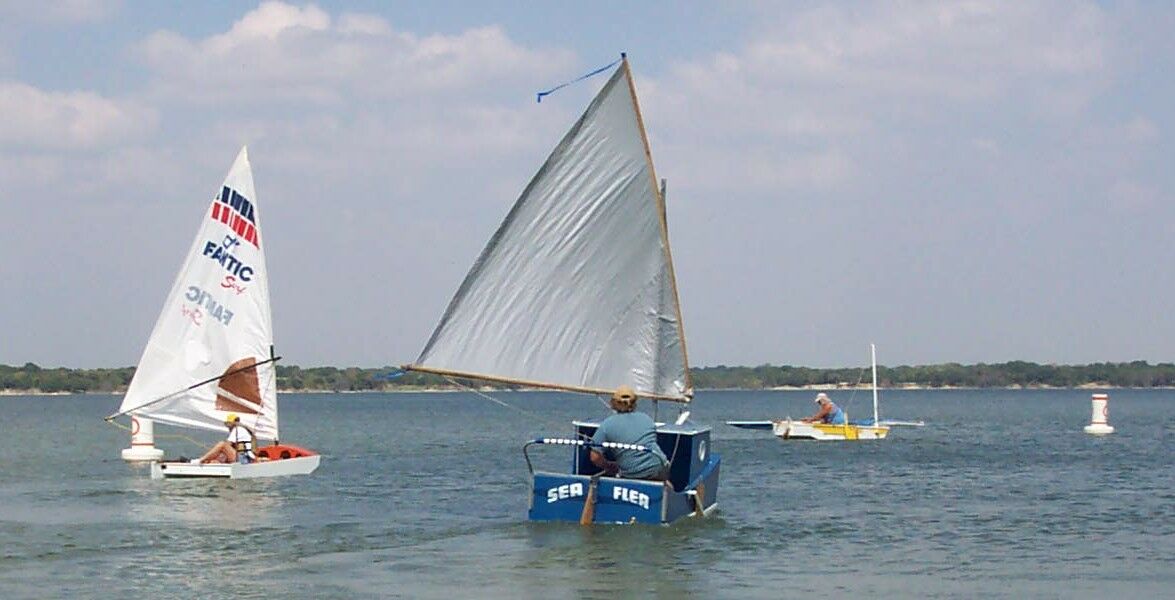
With the preliminaries out of the way, Jason, John, and Neil set forth to do battle. It was interesting that, with only three boats, we had illustrations of nearly the entire range of Puddle Duck Racers that currently exist.
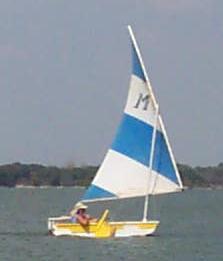
Neil's Myrtle is as close to a "standard" PDR as exists, a basic plywood box with side air boxes and a leeboard; its distinguishing feature is an offset mast, mounted in the starboard air box.
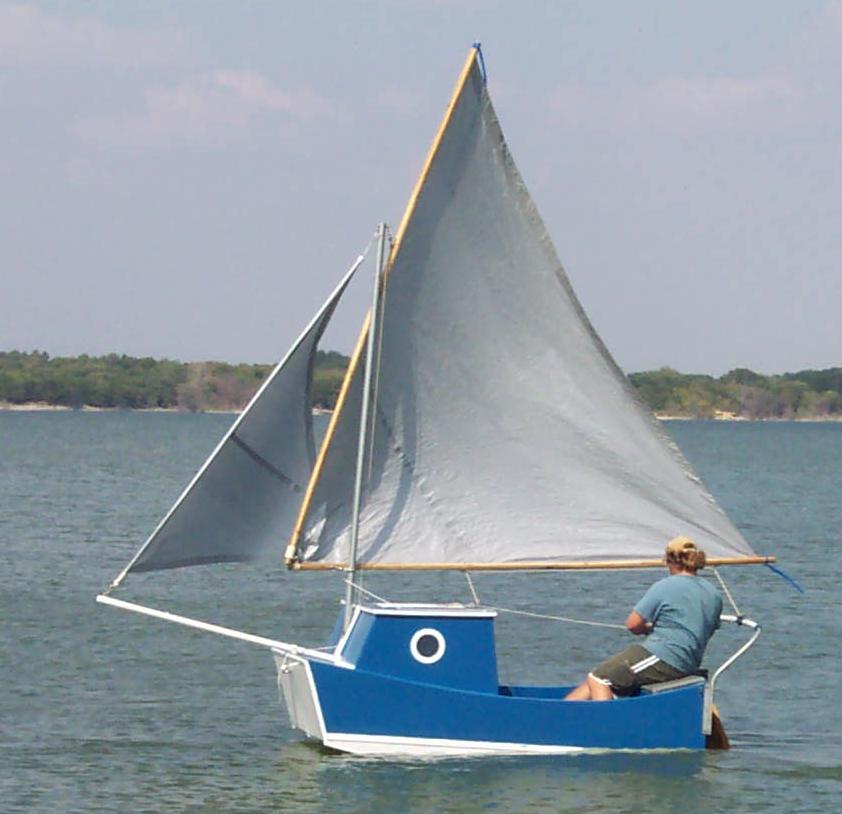
Jason's Sea Flea is the most elaborate, and prettiest, PDR to date, and the only one with a cabin that I know of.
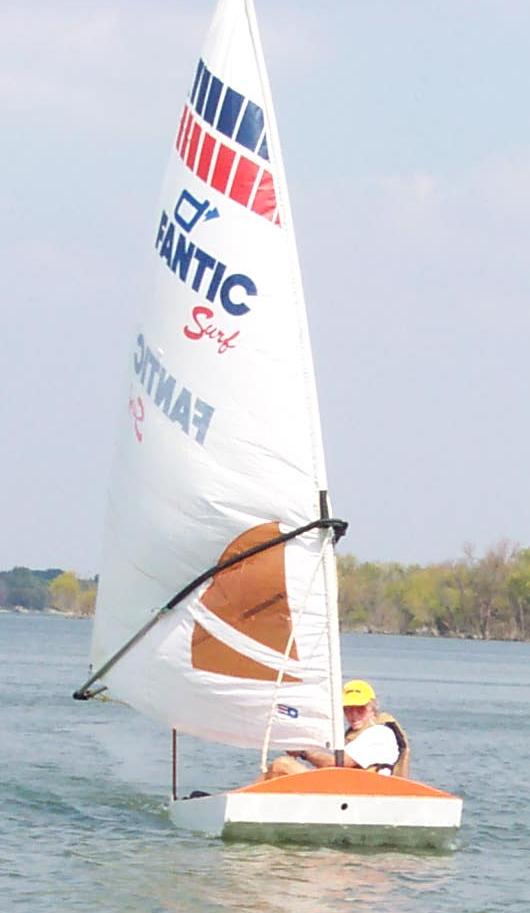
John's Q&D is arguably the most technically advanced boat in the fleet, with an more-or-less monocoque hull and sides extended down into bilge keels. It looked to be an interesting race, though it was acknowledged that Jason and the Flea had a significant weight disadvantage.
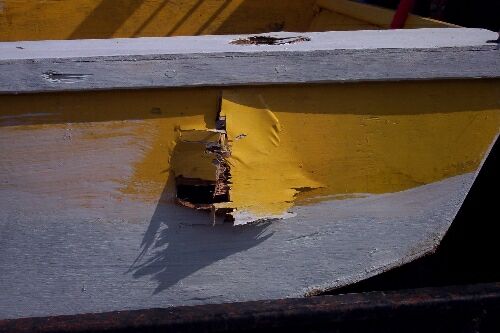
It was agreed that the pair of buoys that marked the approach to the launch ramp would serve as the start/finish line, and an unidentified orange object floating in the middle of the lake would serve as the turnaround point. The race was about to start when Myrtle was dismasted; the foot of the mast had lifted off its step, allowing the mast to topple sideways, punching a hole in the side of the boat in the process. Neil gathered his mast and sail, shipped his oars, and rowed back to the ramp.
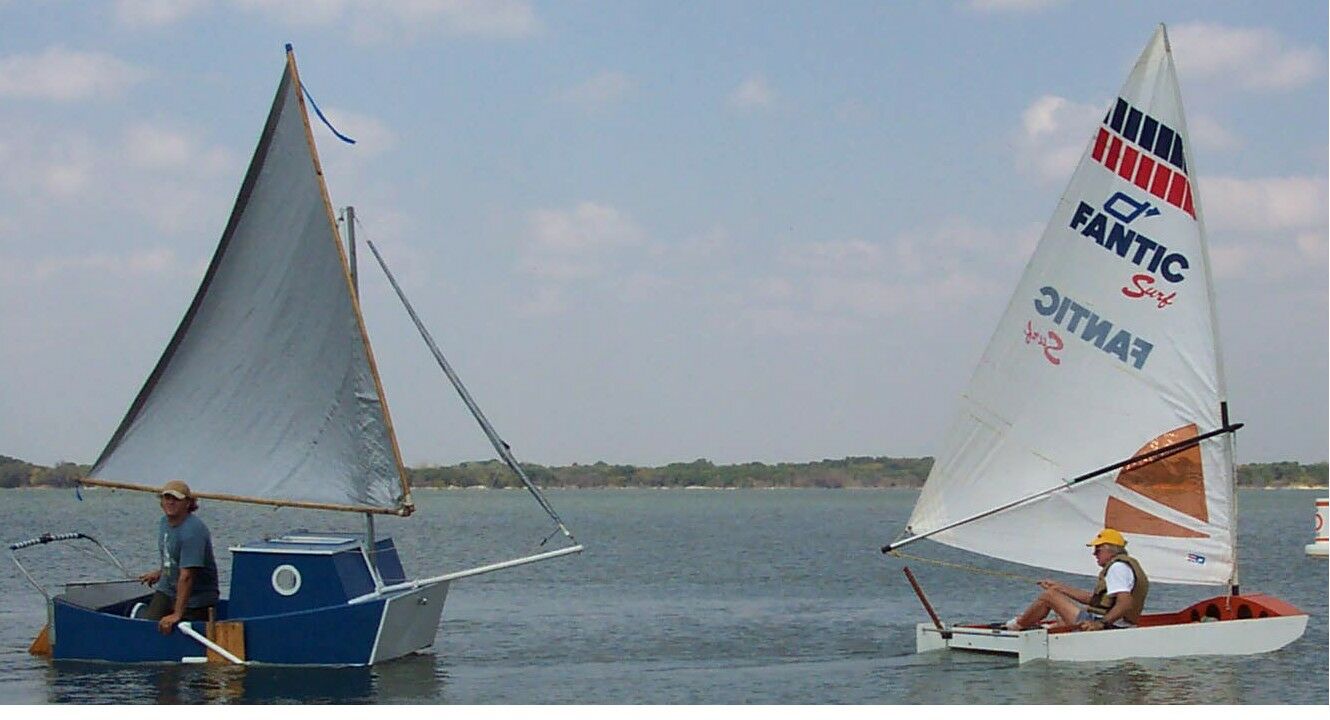
That left Jason and John, who jockeyed to the start line and ad-
libbed an amazingly gentlemanly start:
"Are you going?"
"Yeah, I'm going."
"Then I'm going."
And they were off downwind.
Jason unfurled his jib coming off the start, and sailed the downwind
leg wing-and-wing. I tried hard to get a decent picture of that,
between my camera and Jason's. I wanted photographic documentation of
the fact that it really is possible for one of these little plywood
boxes to be beautiful, because of course ANY sailboat running wing-
and-wing is beautiful; there is no alternative. Alas, no such picture
turned up on my camera; I can only hope I had better luck with
Jason's camera.
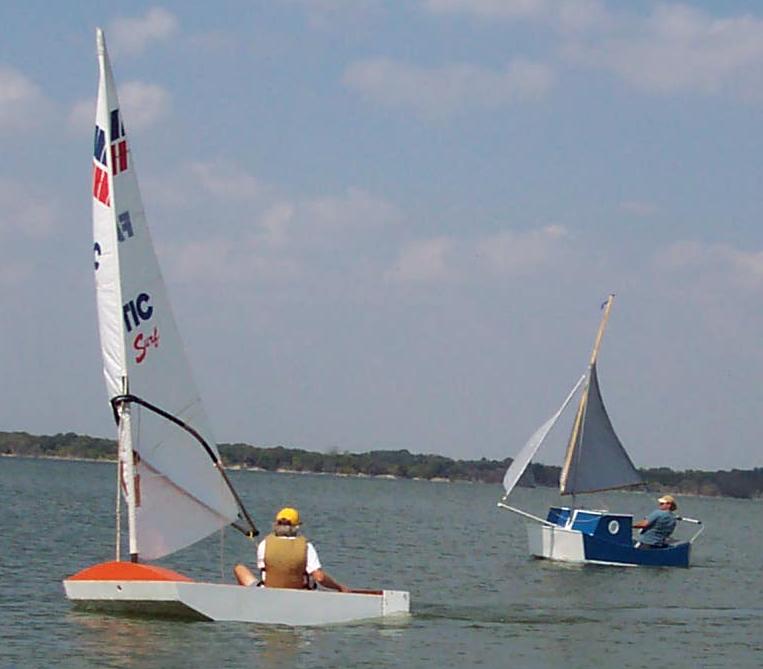
The two boats were fairly close through the turnaround, with John slightly ahead. Things started to go wrong on both boats with the turn. John's sprit boom rig, scavenged from a 30 year old Italian wind surfer, was rigged with a clew outhaul instead of a snotter, and it came loose; John was able to secure it, and continued back upwind. Jason had gudgeon problems; lateral forces caused the top gudgeon to bend one way, and the bottom one the other, giving his rudder a cant that reduced its effectiveness considerably. This, combined with the weight disadvantage mentioned earlier (the Q&D had a gross weight of something less than 225 pounds; the Sea Flea displaced more than twice that), caused Jason to take about twice as long to run the upwind leg as it did John.
Once the race was over, there was the obligatory after-race libation and kibitz, which I participated in until my longsuffering wife's eyes started to glaze over (It seems she has a limited tolerance for discussions of adhesives…), and it was time to head back north.
I REALLY need to build one of these things…
Paul Haynie
10/14/2005
(Special thanks to Jason Nabors for food and inspiration.)
